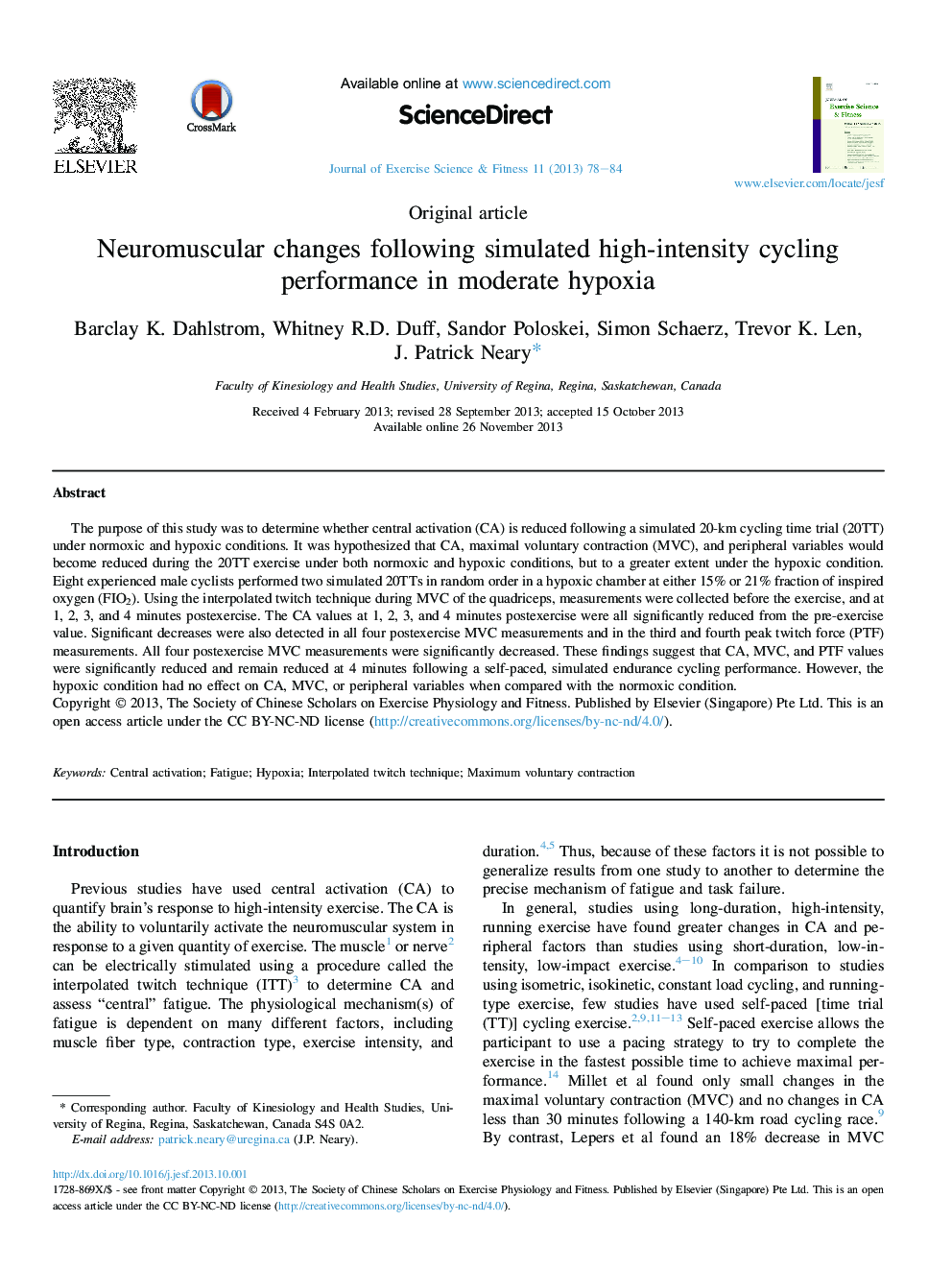| Article ID | Journal | Published Year | Pages | File Type |
|---|---|---|---|---|
| 2739624 | Journal of Exercise Science & Fitness | 2013 | 7 Pages |
The purpose of this study was to determine whether central activation (CA) is reduced following a simulated 20-km cycling time trial (20TT) under normoxic and hypoxic conditions. It was hypothesized that CA, maximal voluntary contraction (MVC), and peripheral variables would become reduced during the 20TT exercise under both normoxic and hypoxic conditions, but to a greater extent under the hypoxic condition. Eight experienced male cyclists performed two simulated 20TTs in random order in a hypoxic chamber at either 15% or 21% fraction of inspired oxygen (FIO2). Using the interpolated twitch technique during MVC of the quadriceps, measurements were collected before the exercise, and at 1, 2, 3, and 4 minutes postexercise. The CA values at 1, 2, 3, and 4 minutes postexercise were all significantly reduced from the pre-exercise value. Significant decreases were also detected in all four postexercise MVC measurements and in the third and fourth peak twitch force (PTF) measurements. All four postexercise MVC measurements were significantly decreased. These findings suggest that CA, MVC, and PTF values were significantly reduced and remain reduced at 4 minutes following a self-paced, simulated endurance cycling performance. However, the hypoxic condition had no effect on CA, MVC, or peripheral variables when compared with the normoxic condition.
